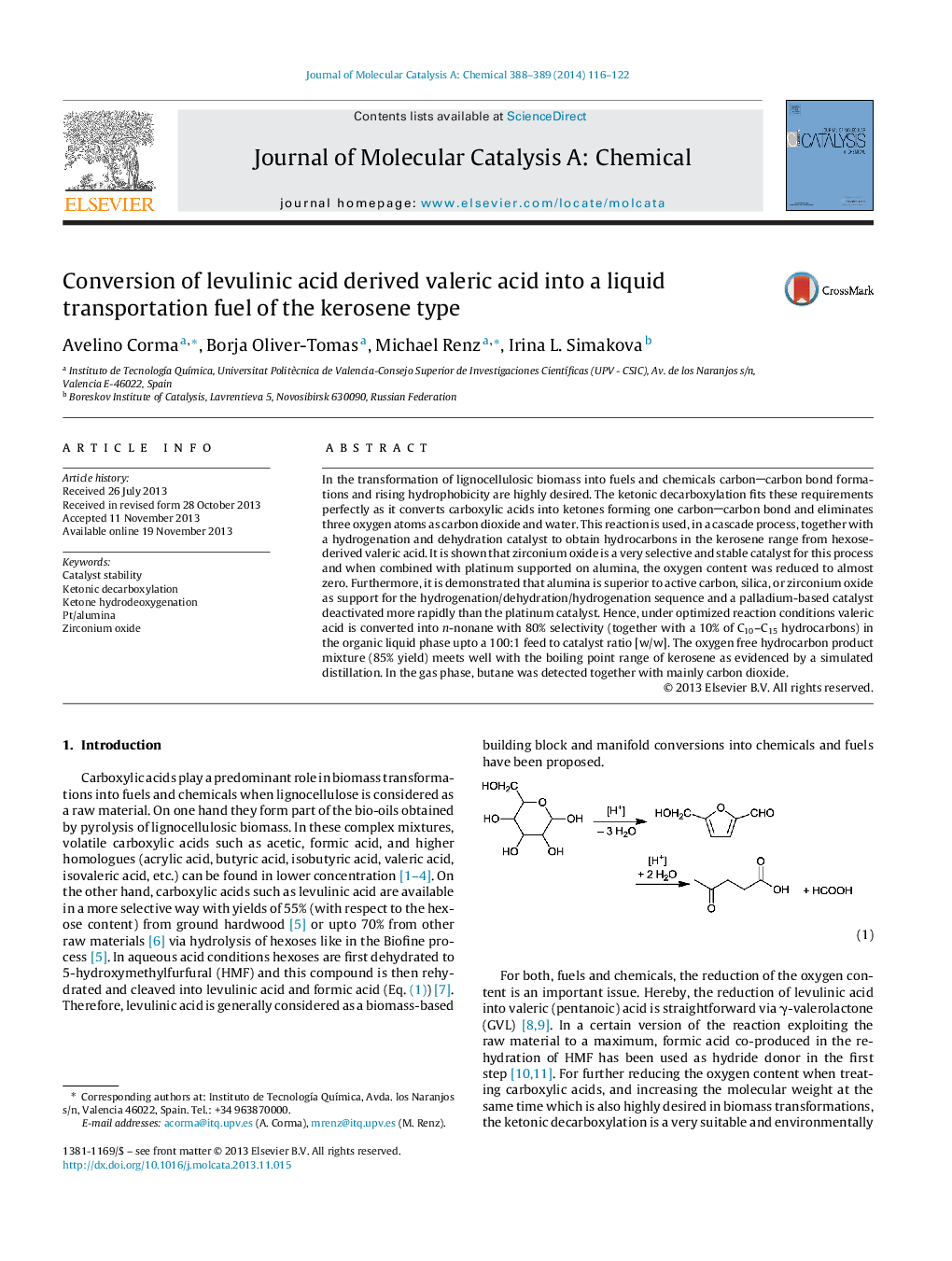| کد مقاله | کد نشریه | سال انتشار | مقاله انگلیسی | نسخه تمام متن |
|---|---|---|---|---|
| 65568 | 48396 | 2014 | 7 صفحه PDF | دانلود رایگان |
• ZrO2 is a stable catalyst for the ketonic decarboxylation.
• Ketonic decarboxylation is combined with hydrodeoxygenation in one fixed-bed.
• Pentanoic acid is converted into n-nonane with 80% selectivity.
• Hexose derived pentanoic acid is transformed into an oxygen-free kerosene fuel.
In the transformation of lignocellulosic biomass into fuels and chemicals carboncarbon bond formations and rising hydrophobicity are highly desired. The ketonic decarboxylation fits these requirements perfectly as it converts carboxylic acids into ketones forming one carboncarbon bond and eliminates three oxygen atoms as carbon dioxide and water. This reaction is used, in a cascade process, together with a hydrogenation and dehydration catalyst to obtain hydrocarbons in the kerosene range from hexose-derived valeric acid. It is shown that zirconium oxide is a very selective and stable catalyst for this process and when combined with platinum supported on alumina, the oxygen content was reduced to almost zero. Furthermore, it is demonstrated that alumina is superior to active carbon, silica, or zirconium oxide as support for the hydrogenation/dehydration/hydrogenation sequence and a palladium-based catalyst deactivated more rapidly than the platinum catalyst. Hence, under optimized reaction conditions valeric acid is converted into n-nonane with 80% selectivity (together with a 10% of C10–C15 hydrocarbons) in the organic liquid phase upto a 100:1 feed to catalyst ratio [w/w]. The oxygen free hydrocarbon product mixture (85% yield) meets well with the boiling point range of kerosene as evidenced by a simulated distillation. In the gas phase, butane was detected together with mainly carbon dioxide.
Figure optionsDownload high-quality image (146 K)Download as PowerPoint slide
Journal: Journal of Molecular Catalysis A: Chemical - Volumes 388–389, July 2014, Pages 116–122
